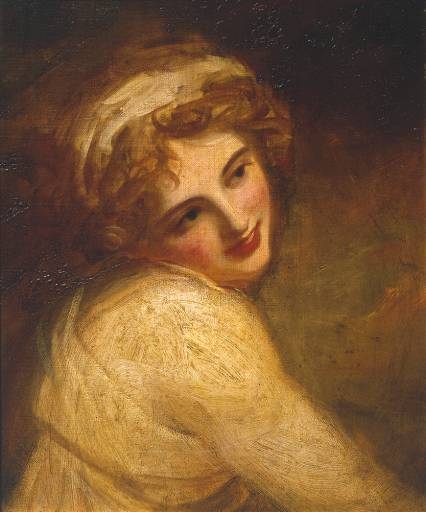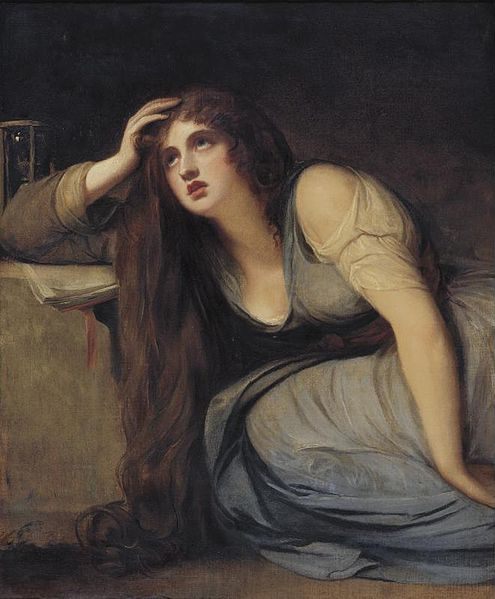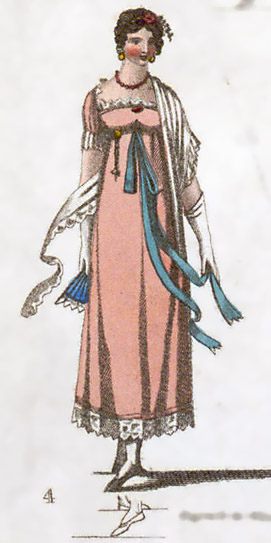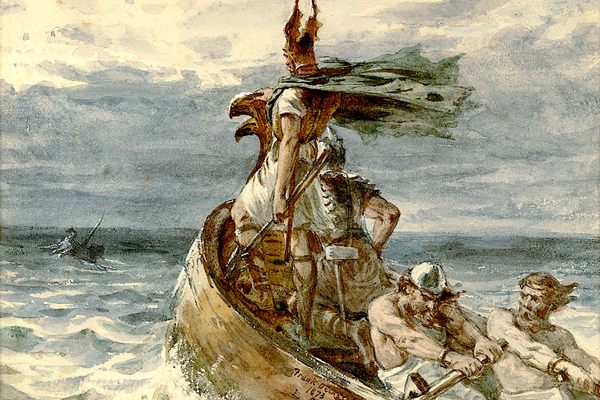The Society Lady Who Brought Ancient Greek Fashion to 18th Century Europe
A stylish tragicomedy.

Lady Hamilton as Circe by George Romney. (Photo: Tate Online/PD 1923.)

Known all over Europe for her astonishing beauty, Lady Hamilton accomplished many things in her lifetime. She was considered a key figure in the arts, a muse and patron, and her political influence saved the King and Queen of Naples. As if that wasn’t enough, she also—along with the spread of democratic ideas in the aftermath of the French Revolution, and the discovery of Pompeii—revived the neoclassical style that marks the Regency Period (1795-1825).
But to understand the influence she held over Europe, one must follow the trajectory of her life. Born in poverty and employed as a maid in her teenage years, her astonishing beauty and irresistible charm earned her the heart of many powerful men. Though scorned by her first two lovers, she eventually became the inamorata (and subsequent wife) of Sir William Hamilton, the English ambassador in Naples.
It was from this city, foreign though it was to her, that Lady Hamilton would make the world kneel at her feet.

Lady Hamilton as a fortune teller, by George Romney. (Photo: TateMuseum/ Public Domain)
Her journey to renown began with the warm welcome she received from the aristocracy in Naples. Despite being Sir William’s mistress, Lady Hamilton did not face scorn, derision, or persecution. Indeed, rather than focus on her status as a mistress, the nobles learned to appreciate her many virtues, among which stood out her cleverness, beauty, and high-spirits.
In time her company was sought after by many. Dukes and princes threw banquets in her honor. Noblemen wooed her. The King himself paid respects to her.

This portrait of Lady Hamilton as The Magdalene by George Romney was commissioned by the Prince of Wales himself (Photo: Sotheby’s New York/Public Domain)
Even peasants were receptive to her charms. James Thomas Herbert Baily tells us in his biography of Lady Hamilton that “the country people fell down on their knees before her, asking favours from her in the name of the Blessed Virgin in whose likeness the good God had made her.”
Artists came from all over Europe to paint Lady Hamilton’s portrait. When they could not see her in person, they used for reference sketches drawn by George Romney, the first artist for whom she was a muse. The Lady Hamilton mania was so intense that in her lifetime she was the most painted woman in the continent, surpassing empresses and queens.

Portrait of Emma, Lady Hamilton as a Bacchante by Louise Élisabeth Vigée Le Brun (Photo: Public Domain)
Eager to please the nobles whose world she now inhabited and anxious to showcase her talents, Lady Hamilton searched for novel ways to charm and entertain the many guests that visited her house. To that end, and capitalizing on her naturally classical looks, she developed an art form of her own invention called “Attitudes”. It consisted in giving performances where she would drape herself in simple cloth and strike, in graceful succession, a variety of poses modeled after classical themes.
Though it may be difficult for the modern reader to imagine that such a spectacle would appeal to anyone’s taste, European society couldn’t get enough of Lady Hamilton’s Attitudes. One of the best descriptions of the enchanting effect she had on her audience comes from Johann Wolfgang von Goethe. In his work Italian Journey, he describes a performance at the Hamiltons’ household as follows:
“She wears a Greek garb, becoming to her to perfection. She then merely loosens her locks, takes a pair of shawls, and effects changes of postures, moods, gestures, mien, and appearance that make one really feel as if one were in some dream […] successively standing, kneeling, seated, reclining, grave, sad, sportive, teasing, abandoned, penitent, alluring, threatening, agonised. One follows the other, and grows out of it. She knows how to choose and shift the simple folds of her single kerchief for every expression, and to adjust it into a hundred kinds of headgear.”

A sketch of Lady Hamilton’s Attitudes by Francesco Novelli 1791 (Photo: The Victoria and Albert Museum/Public Domain)
In her daily life Lady Hamilton wore garments similar to those she used in performance, simple white robes with colorful sashes fastened to make a high waist. In this she would not remain alone. Eighteenth century Europe was by then obsessed with the classical age, and Lady Hamilton’s fashion choices both exemplified and mobilized the continent’s burgeoning trends. She became Europe’s preeminent trendsetter.
Her most lasting contribution to fashion might be the robe a la grec.

Satire of Lady Hamilton and Queen Maria Caroline’s close relationship by James Gillray (Photo: Wellcome Library, London, CC by 4.0)
The clothing of the mid-1700s was characterized by intricate dresses assembled with layers upon layers of skirts and decorated with symmetrical shapes that contoured the waist. It reflected a society obsessed with Rococo style, which favored opulence and ornament.
Regency looks were a stark contrast to this. Like the garments worn by Greek goddesses, modern robes were simple. Instead of stacking countless layers upon each other, the new trend favored dresses that combined only three pieces of clothing: the corset, the chemise, and the gown. The gowns, like those we see in classical paintings, featured mostly light colors, and they were loose fitting, with the waistline set just below the bosom. Following Lady Hamilton’s natural look, hairstyles also became simpler. Even the French ditched the massive wigs that had adorned the heads of the executed rulers.

High waists, simple robes, and classical hairstyles characterized Regency fashion. Picture from “The Five Positions of Dancing” by T. Wilson 1811 (Photo: Public Domain)
What Lady Hamilton did, society was eager to follow. It was thus that she contributed to the revival of Europe’s obsession with ancient Greece.
But not everyone loved or approved of her, and she was often the victim of malicious gossip and satire. Her luck turned when she became the lover of Admiral Nelson, England’s most beloved naval hero. She fell out of favor with the general public after she began to openly live with Nelson and Sir Hamilton in what is often considered the first publicly known menage-a-trois of the modern world. At the time of her death at the age of 49, with both her husband and her lover deceased, she had found herself destitute and alone.
But however unglamorous her end might have been, in life Lady Hamilton was a blazing torch. After all, how many people can boast of having defined the style of an entire era?

















Follow us on Twitter to get the latest on the world's hidden wonders.
Like us on Facebook to get the latest on the world's hidden wonders.
Follow us on Twitter Like us on Facebook